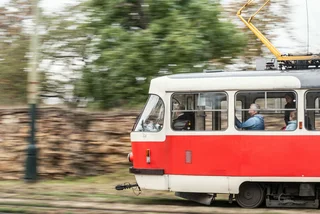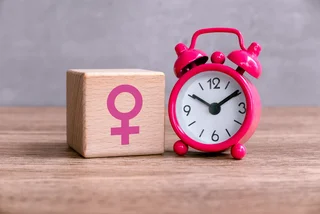Over 5 million people have been fully vaccinated in the Czech Republic since Dec. 27, 2020, when vaccination began, according to the latest figures from the Czech Health Ministry.
The exact figure is 5,008,072. The Czech Republic has a population of 10.65 million, so that comes to 46.82 percent, including children under 12 who are not eligible for vaccination. People who received their final dose in the last two weeks still have to wait for the vaccine to become fully effective.
The Czech Republic lags slightly behind the European Union average in the vaccination. Even with 5 million fully vaccinated, it ranks the 16th of the 27 countries in the EU. Malta is in first place, with 74 percent of its population fully vaccinated. Among larger EU countries, Spain leads with 58.3 percent of its population fully vaccinated, followed by Italy with 54.4 percent, France with 52.9 percent, and Germany with 52.2 percent, according to figures complied by news agency AFP. Romania and Bulgaria had the lowest percentages.
Czech Health Minister Adam Vojtěch, though, has previously said that 85 percent of the population needs to be vaccinated for herd or collective immunity to be created due to the new Delta variant of coronavirus.
Some 50,413 doses were given out on Aug. 5, and of those, 38,333 were either second doses or the single-dose Janssen vaccine from Johnson & Johnson.
The number of fully vaccinated people includes 4,856,685 who have had two doses of Pfizer/BioNTech, Moderna, or AstraZeneca, and 151,400 who have had the Janssen vaccine. This adds up to 5,008,085. There was no explanation for the slight discrepancy of 12 people.

In total, 10,574,261 vaccine doses have been given out since vaccination began in the Czech Republic, with 5.6 million first doses and 4.9 million second doses. The most popular vaccine by far is Pfizer/BioNTech, also called Comirnaty, which accounts for 82.3 percent of vaccinations. Ir is followed by AstraZeneca’s Vaxzevria at 8.16 percent, and Moderna’s Spikevax at 8.15 percent.
The single-shot Janssen vaccine is only at 1.43 percent, but it is proving very popular with people coming for walk-in vaccinations when they are given a choice. The recipient can get a certificate stating they are fully vaccinated in just two weeks, while there is at least five weeks to get a certificate with the other vaccines due to a minimum 21 day wait for the second shot and then two weeks for it to become fully effective.

So far, these are the only four vaccines approved for use in the European Union, though the EU has now ordered 100 million doses from the US company Novavax, with the option to buy 100 million more. The Novovax vaccine awaiting final approval from the European Medicines Agency (EMA).
Prague is on top of the vaccination campaign with almost 1.9 million doses in total. Over 1 million doses have also been applied in the South Moravia, Central Bohemia, and Moravia-Silesia regions. By contrast, just under 283,000 doses have been applied in the Karlovy Vary region, the least populated of Czech regions.
The daily number of vaccinations nationwide has been dropping, and has not topped the target of 100,000 per day since July 7. It recently has often been about half of that. The target was first reached May 20, with 100,547,and the peak so far was on June 10 with 121,375.
Vaccination in the Czech Republic began Dec. 27, 2020, with Prime Minister Andrej Babiš and and war veteran Emilie Řepíková among the first to get the Pfizer/BioNTech vaccine, which was the only one approved for use in Europe at the time.
Due to short supplies of vaccine, doses were first offered to hospital staff and emergency workers who were dealing with Covid patients directly, and to people over 80 who were at the highest risk of dying from the disease. It was then rolled out to teachers and to successively younger groups of people as more vaccine became available.

The last group it became available to was children 12 and over as of July 1, 2021. There was an issue though for residents with private insurance, who could not get vaccinated until the middle of June, and had to pay on the spot.
Both the Czech Republic and Prague administration have been stepping up efforts to get more people to become vaccinated. Centers that take people without prior registration began to open as of July 12, and Prague City Hall started a vaccination bus at the end of July, and also has a mobile station to vaccinate the homeless.












 Reading time: 3 minutes
Reading time: 3 minutes 


 English
English
 German
German
 Italian
Italian
 Czech
Czech
 Arabic
Arabic
 Turkish
Turkish



























